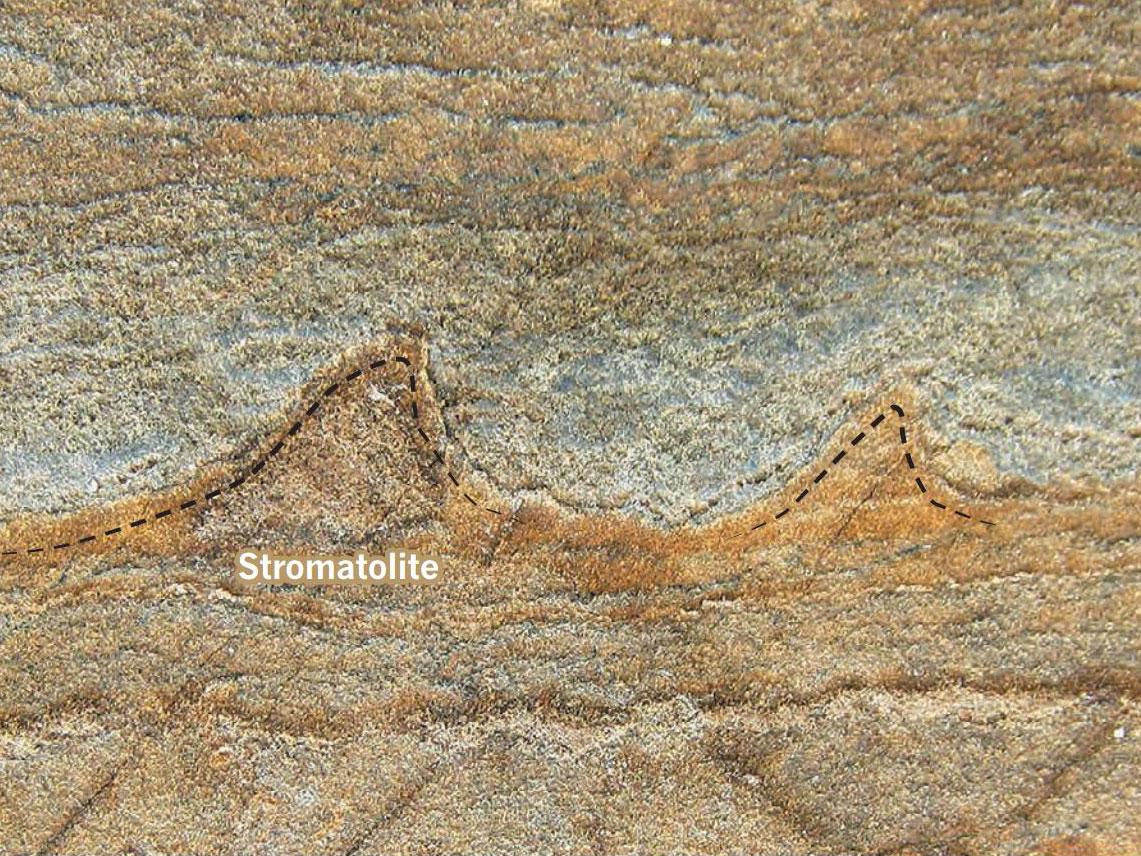The Independent's journalism is supported by our readers. When you purchase through links on our site, we may earn commission.
World’s oldest fossils found in discovery with ‘staggering’ implications for search for alien life
‘Suddenly, Mars may look even more promising than before as a potential abode for past life’

The oldest known fossils – dating back 3.7 billion years to a time when the Earth was still being bombarded by asteroids – have been found in Greenland, scientists announced in a discovery that could have “staggering” implications.
Rocks recently exposed after a once-permanent layer of snow melted were found to contain stromatolites, sediments the researchers said had been created by the growth of layer upon layer of micro-organisms.
If confirmed as evidence of life, they are about 220 million years older than the previous record holder and the researchers said the “sophistication” of the microbes pointed to life on Earth beginning more than four billion years ago.
Commenting on the discovery, a Nasa expert on the early Earth said if the fossils were evidence of living creatures then the discovery showed “life is not a fussy, reluctant and unlikely thing” – increasing the chances that it will have developed on Mars and elsewhere in the Universe.
Dr Abigail Allwood, of Nasa’s Jet Propulsion Laboratory, added that while there were no actual fossilised organic remains, the rocks contained “fairly credible hallmarks of microbial activity”.
Writing in the journal Nature, the researchers, from Australia and the UK, said the stromatolites had grown “in a shallow marine environment” in what is now Isua, south-west Greenland.
“The stromatolites predate by 220 million years the previous most convincing and generally accepted evidence for oldest life remains in the 3,480 million-year-old Dresser Formation of the Pilbara Craton, Australia,” they added.
They suggested the “sophistication of life” 3.7 billion years ago was “in accord with genetic molecular clock studies placing life’s origin in the Hadean eon”, more than four billion years ago. The Earth itself is believed to have formed about 4.6 billion years ago.
They also said the evidence suggested there had been an “equable climate” at the time despite the “the faint young Sun” and suggested this was probably because the atmosphere had a lot of carbon dioxide and/or methane.
In an accompanying comment article in Nature, Dr Allwood said the discovery may help answer a significant question for those trying to work out what happened at the dawn of life of Earth.
“Did life on this planet begin only after a relatively long planetary evolution, until suitable environments emerged that allowed life to gain a toehold, or was the cradle of life ready and rocking when Earth itself was but an infant?” she wrote.
The rocks contain tantalising signs of activity such as “ancient ripple marks and piles of rock fragments deposited during an ancient storm”, Dr Allwood said.
She cautioned that structures which look similar to stromatolites can form without any living organisms, saying it had been “notoriously difficult” to establish signs of life in the few rocks that remain from the Earth’s “infancy”.
“The discovery … will no doubt also spark controversy,” Dr Allwood wrote.
“There are no organic or cellular remains … [but there] are fairly credible hallmarks of microbial activity.”
She said the discovery could have significant implications for the search for extraterrestrial life.
“If these are really the figurative tombstones of our earliest ancestors, the implications are staggering,” Dr Allwood wrote.
“Earth’s surface 3.7 billion years ago was a tumultuous place, bombarded by asteroids and still in its formative stages.
“If life could find a foothold here, and leave such an imprint that vestiges exist even though only a minuscule sliver of metamorphic rock is all that remains from that time, then life is not a fussy, reluctant and unlikely thing.
“Give life half an opportunity and it’ll run with it. Our understanding of the nature of life in the Universe is shaped by how long it took for Earth to establish the planetary conditions for life.
“Suddenly, Mars may look even more promising than before as a potential abode for past life.”
Join our commenting forum
Join thought-provoking conversations, follow other Independent readers and see their replies
Comments